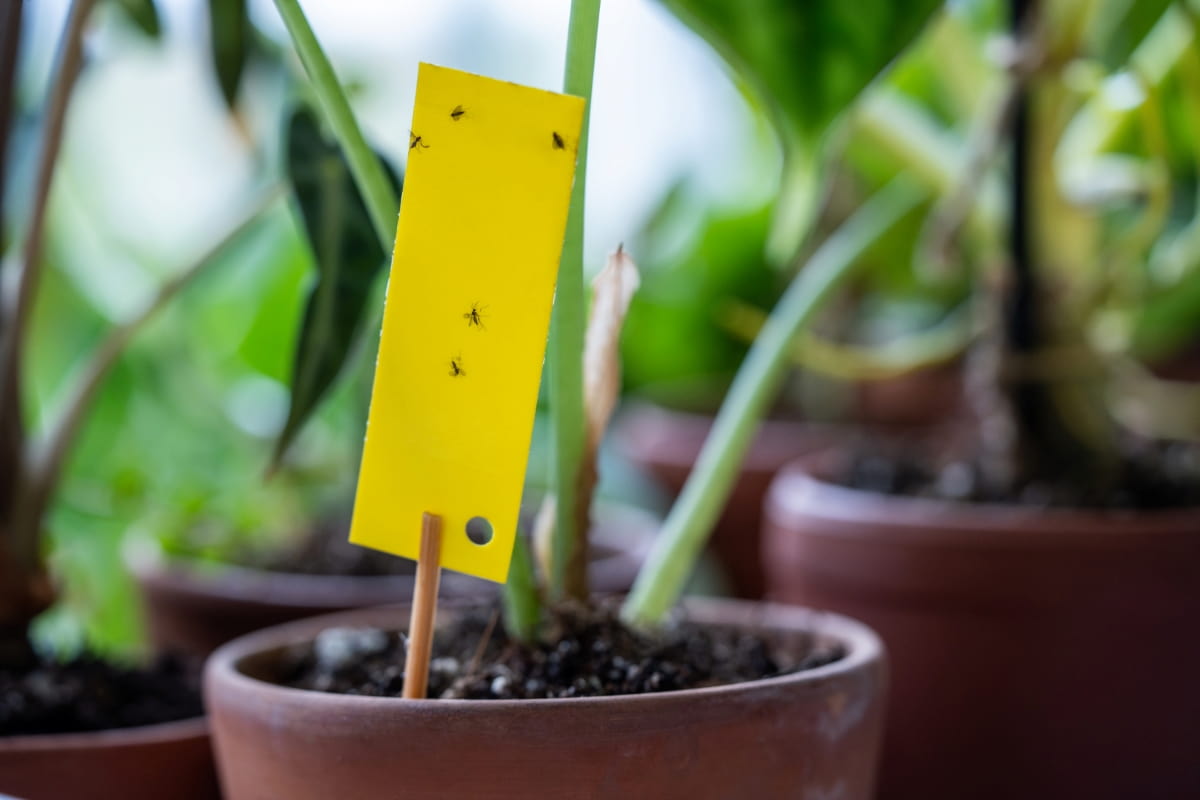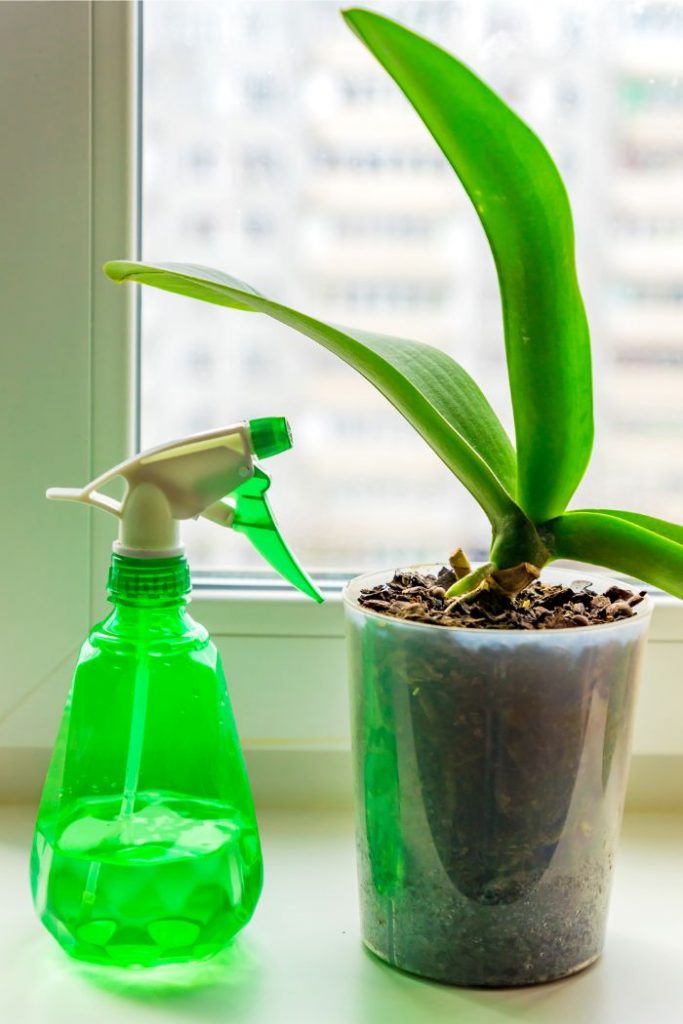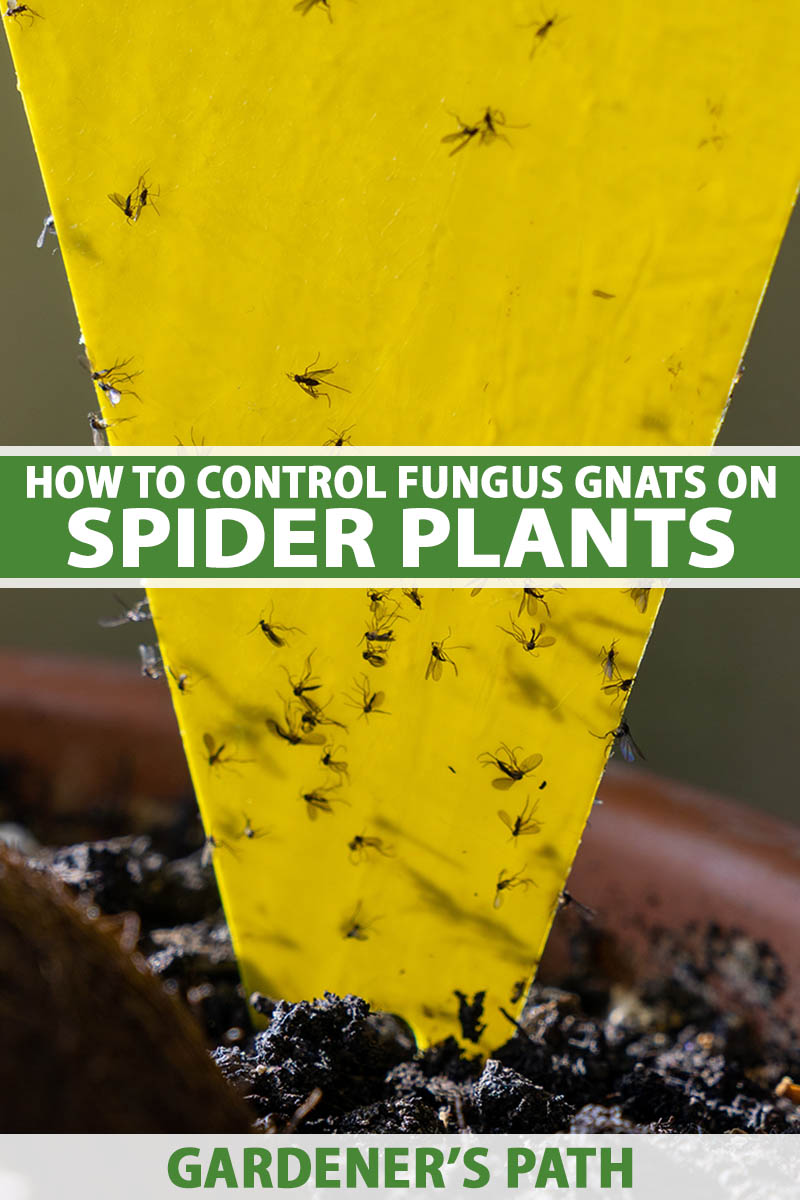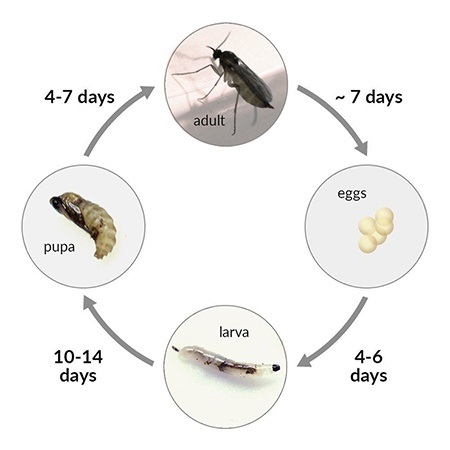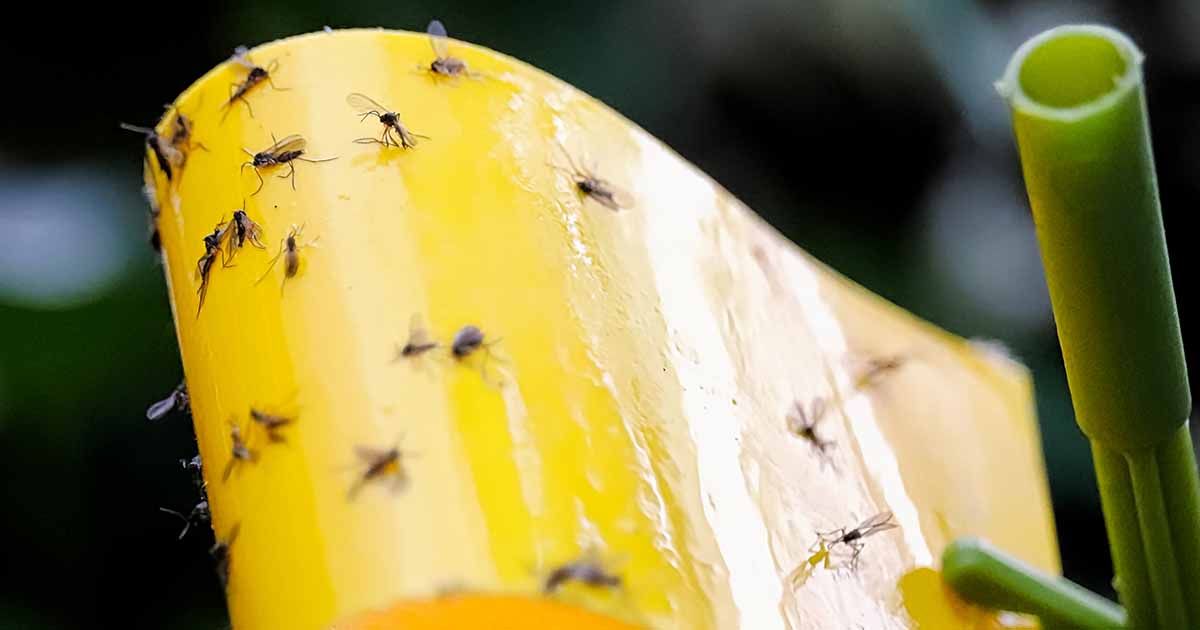The Fungus Gnat Problem: Identifying the Issue
Fungus gnats are a common nuisance in houseplants, causing damage to roots, stems, and leaves. These tiny insects, typically ranging from 1/16 to 1/8 inch in length, can be identified by their distinctive Y-shaped veins on their wings. Fungus gnats thrive in moist environments, making overwatered plants an ideal breeding ground. If left unchecked, they can lead to weakened plants, reduced growth, and increased susceptibility to disease. It’s essential to address the issue promptly, as fungus gnats can quickly spread to other plants. To effectively get rid of fungus gnats in houseplants, it’s crucial to understand the root causes of the problem and take proactive steps to prevent re-infestation.
Understanding the Life Cycle of Fungus Gnats
To effectively get rid of fungus gnats in houseplants, it’s essential to understand their life cycle. Fungus gnats undergo a complete metamorphosis, consisting of four stages: egg, larva, pupa, and adult. Female fungus gnats lay eggs in moist soil, which hatch into larvae within 3-5 days. The larvae feed on fungi, algae, and plant roots, causing damage to the plant. After 1-2 weeks, the larvae pupate, and adult fungus gnats emerge. Adult fungus gnats live for approximately 1-2 weeks, during which they mate and lay eggs, starting the cycle anew. Understanding the life cycle of fungus gnats helps in developing effective control strategies, such as targeting the larvae stage with insecticidal soap or neem oil. By disrupting the life cycle, you can prevent re-infestation and successfully eliminate fungus gnats from your houseplants.
How to Get Rid of Fungus Gnats: Environmental Controls
Maintaining good hygiene and environmental conditions is crucial in preventing fungus gnat infestations. Fungus gnats thrive in moist, humid environments with poor air circulation. To create an unfavorable environment for gnats, adjust the temperature, humidity, and light levels in your home. Keep the soil consistently moist but not waterlogged, as this can exacerbate the problem. Ensure good air circulation around your plants by providing adequate space between them and using fans if necessary. Additionally, reduce the humidity around your plants by using a dehumidifier or improving ventilation. By controlling the environment, you can reduce the likelihood of fungus gnat infestations and create a healthy environment for your houseplants. This, combined with other control methods, can help you get rid of fungus gnats in houseplants effectively.
Natural Methods for Controlling Fungus Gnats
When it comes to getting rid of fungus gnats in houseplants, natural methods are often the most effective and environmentally friendly approach. One popular method is using neem oil, a natural insecticide that can be applied to the soil to kill fungus gnat larvae. Insecticidal soap is another effective natural method that works by breaking down the insect’s exoskeleton, causing dehydration and eventual death. Diatomaceous earth, a powder made from fossilized algae, can also be used to dehydrate and kill fungus gnats. These natural methods are not only effective but also offer a safer alternative to chemical pesticides, which can harm beneficial insects and the environment. By incorporating these natural methods into your fungus gnat control strategy, you can create a healthier environment for your houseplants and reduce the risk of re-infestation. Remember, getting rid of fungus gnats in houseplants requires patience and persistence, but with the right natural methods, you can win the battle against these unwanted pests.
Biological Controls: Introducing Natural Predators
Another effective way to get rid of fungus gnats in houseplants is by introducing natural predators into the environment. Ladybugs and lacewings are two examples of beneficial insects that can be used to control fungus gnat populations. These natural predators feed on fungus gnat larvae and eggs, helping to break the life cycle of the pests. Biological controls offer a targeted approach to managing fungus gnats, as they specifically target the pest species without harming other beneficial insects. However, it’s essential to note that introducing natural predators requires careful planning and execution, as they may not be effective in all environments. Additionally, it’s crucial to ensure that the natural predators are compatible with the specific houseplant species being grown. By incorporating biological controls into your fungus gnat management strategy, you can create a balanced ecosystem that promotes healthy plant growth and minimizes the risk of re-infestation. Remember, how to get rid of fungus gnats in houseplants requires a multi-faceted approach, and biological controls can be a valuable addition to your arsenal of control methods.
Chemical Controls: When to Use Insecticides
In severe cases of fungus gnat infestations, chemical insecticides may be necessary to get rid of the pests. However, it’s essential to use these products as a last resort, as they can have negative environmental and health impacts. Chemical insecticides can be effective in killing fungus gnats, but they can also harm beneficial insects and contaminate soil and water. When using insecticides, it’s crucial to select products that are specifically labeled for use against fungus gnats and follow the instructions carefully. Additionally, it’s important to take steps to minimize the risks associated with insecticide use, such as avoiding spraying plants when they are in bloom and using protective gear when applying the products. Remember, how to get rid of fungus gnats in houseplants requires a thoughtful and targeted approach, and chemical controls should only be used when other methods have been exhausted. By understanding the risks and benefits of chemical insecticides, you can make informed decisions about when to use them and how to minimize their impact on your houseplants and the environment.
Preventing Re-Infestation: Long-Term Strategies
To ensure that fungus gnats do not return, it’s essential to implement long-term strategies that focus on prevention and maintenance. Regular monitoring is crucial in detecting early signs of infestation, allowing for prompt action to be taken. Soil sterilization is another effective method for preventing re-infestation, as it eliminates any remaining fungus gnat eggs or larvae. Additionally, maintaining healthy plant practices, such as providing adequate light, water, and nutrients, can help to strengthen plants and make them less susceptible to fungus gnat infestations. By incorporating these strategies into your houseplant care routine, you can significantly reduce the risk of re-infestation and create a fungus gnat-free environment. Remember, how to get rid of fungus gnats in houseplants requires a persistent and vigilant approach, and by staying proactive, you can enjoy healthy, thriving plants for years to come.
Conclusion: Winning the Battle Against Fungus Gnats
In conclusion, managing fungus gnats in houseplants requires a comprehensive approach that incorporates multiple strategies. By understanding the life cycle of fungus gnats, maintaining good hygiene and environmental conditions, and utilizing natural and biological controls, you can effectively get rid of these pests. Remember, how to get rid of fungus gnats in houseplants is not a one-time task, but rather an ongoing process that requires persistence and vigilance. By implementing the strategies outlined in this article, you can create a fungus gnat-free environment that fosters healthy plant growth and development. Don’t let fungus gnats take over your houseplants – take action today and start enjoying the benefits of a pest-free indoor garden.


